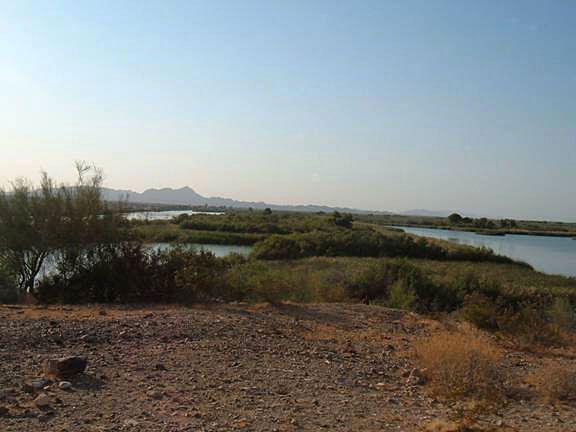
Overcoming the Water Wars (Op-Ed)

Giulio Boccaletti is the managing director of the global freshwater program for The Nature Conservancy. He contributed this article to Live Science's Expert Voices: Op-Ed & Insights.
Conflict is probably the most frequently used word in stories about water in the U.S. West. The word represents the seriousness of global water issues, from the drought-prone areas of Asia to the infrastructure-poor countries of central and southern Africa. Is the future one of litigation amidst an increasingly unsustainable economy and its growing uncertainty?
The crux of the problem is how society manages water. What matters most in these water conflicts is its access: When and where it is available. Water delivered in one place rarely is interchangeable with water delivered elsewhere. Water available in January is not a substitute for water available in August. People in developed nations typically are unaware of this because of infrastructure, such as reservoirs and canals, that allows for the storing of water from one season to the next, and its transport from one place to another.
That very infrastructure can have profound impacts on the ecosystems that depend on rivers and streams . At the same time, however, users who today compete for water would have nothing to compete over without it.
The key, then, to overcoming conflict over scarce resources rests precisely in smarter ways of using that infrastructure to better manage the resources for all users, and nature. Conflicts over water only produce a zero-sum game, but amidst the strain induced by constrained resources, hopeful examples of cooperation and compromise exist.
The most recent example is the bilateral agreement signed between the United States and Mexico that included the release of an historic pulse of water through the Colorado River, reviving the Colorado delta — where water has not flowed regularly since 1960 — and restoring its ecosystem, at least temporarily. [Mexico and U.S. Begin Dam Releases to Restore Colorado River (Op-Ed)]
This agreement will include providing Mexico with access to the storage upstream on the Colorado. This may sound like a plan bringing yet more users to the table, but actually it allows for a more effective use of the existing infrastructure and available water.
Sign up for the Live Science daily newsletter now
Get the world’s most fascinating discoveries delivered straight to your inbox.
And although the purpose of the pulse is environmental, its importance far exceeds its conservation agenda.
The pulse takes advantage of the fact that a water "bank account" can be created, assigning access to a specific amount of stored water. Water can be stored in times of plenty and released when needed, just like savings in a bank. The pulse uses this form of "water banking" to its advantage.
By allowing downstream users — Mexico and the United States in this case — to open a "bank account" far upstream at Lake Mead, it allows Mexico to store water that it otherwise would lose by being available at a time when it isn't needed.
This form of cooperation can transform the nature of the problem, much like a bank account can change spending behavior. Using the existing storage capacity for multiple purposes — including, in the case of the pulse, the environment — allows more effective water allocation, which makes the whole community more resilient. Storage used in this way builds confidence that water always will be there when needed. For example, a city may decide to operate its water systems in a way that relies on a specific amount of stored water, even if it is designated for emergency use and may not be used.
Of course, the parallels with traditional monetary savings are not perfect. For one, the additional stored water really is only an insurance policy, knowing that storage can be traded if needed. But the step is relatively small. Moreover, there are systems around the world — from the Murray Darling Basin in Australia, to the 4,000 year old Aflaj system in Oman — that rely precisely on that trading mechanism to ensure a more effective, non-conflict, allocation of water.
Still, what is extraordinary about this story is the fact that a sophisticated approach to water management emerged within an environment as strained as that of the Colorado River — a way to find water for nature, a use that all too often comes last.
The pulse will revive the delta. It will also show that people willing to find compromises in the context of a regulated system can overcome a zero-sum game. Having a clear, practical set of rules for managing and sharing water resources is not only the key to a sustainable future, but the key to survival.
Follow all of the Expert Voices issues and debates — and become part of the discussion — on Facebook, Twitter and Google +. The views expressed are those of the author and do not necessarily reflect the views of the publisher. This version of the article was originally published on Live Science.










